Even though Antwerp has several larger theater buildings, the Bourla is the city’s most cherished theater thanks to its marvelous architecture and historical significance.
Planning a grand theater
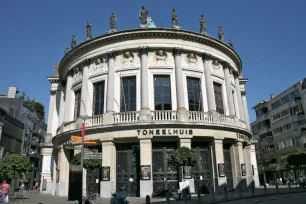
When Pierre Bruno Bourla, a French architect who had studied at the renowned École Polytechnique in Paris, took up his function in 1819 as Antwerp’s new city architect, the city lacked a grand theater. The Tapissiers House, an early eighteenth-century building, was the city’s main theater building, but it lacked modern amenities and could not compete with the monumental theaters in Europe’s largest cities.
Already in 1801, during the French occupation, plans were made to create a new modern theater, but it took until 1827, during the Dutch occupation, before the city of Antwerp asked Pierre Bourla to create plans for a new theater and opera building. At the same time, the Tapissiers House was demolished, making place for the new structure.
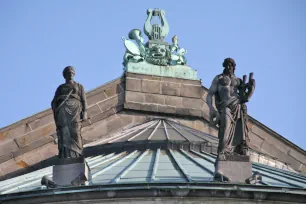
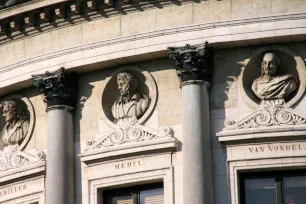
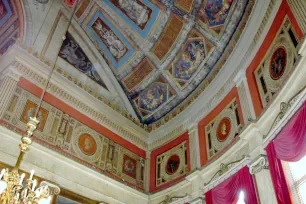
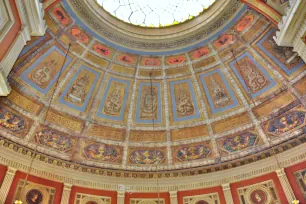
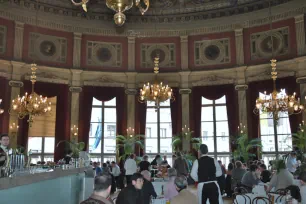
Construction of what would be known as the Théâtre Royal Français (Royal French Theater) started in 1829. Five years later, in 1834, the theater finally opened.
Pierre Bourla’s theater
Bourla designed a sober, well-balanced Neoclassicist building with a semicircular front. The top is decorated with statues of Apollo and the nine muses.
Below the statues, in small niches, are seventeen busts of what was described as ‘the heroes of literary and musical drama’. The list of heroes included Schiller, Mozart, Molière Racine, Lopes de la Vega, Van den Vondel, Sofokles and Shakespeare. The interior was decorated with beautiful mosaics, chandeliers and statues. The building’s architecture received much acclaim and was known as one of the country’s most beautiful structures.
Pieter Dens’ alterations
In 1865 the building’s interior was drastically altered by the architect Pieter Dens. The francophone Théâtre Royal Français was struggling to compete with the Flemish-speaking theater companies, and Dens expanded the theater’s capacity from about 1200 to 2000 seats in an attempt to make the theater profitable again. These efforts were in vain as in 1932 the Théâtre Royal Français was disbanded and replaced by the Flemish speaking Koninklijke Nederlandse Schouwburg (Royal Dutch Theater). Six years later, in 1938, the building was declared a protected monument.
Decline and renovation
From the 1950s on the theater started to decline and in 1980 when a modern new theater building was completed right across the Bourla Theater, the building was abandoned.
After many years of dilapidation, leading to plans to even demolish the protected monument, the city of Antwerp finally decided to restore the building, so it could reopen in 1993, when Antwerp was the cultural capital of Europe. During the restoration, which would take two years, care was taken to restore it as much as possible according to Pierre Bourla’s original plans and removing many of the alterations made by Dens in 1865. The very rare wooden stage machinery, which was still the original from 1834, was also kept intact.
The Bourla Theater today
Today the Bourla Theater once again houses a theater company, the ‘Toneelhuis’. Besides watching a play, you can also go to the magnificent Foyer on the first floor, a cafeteria which is opened daily. Brunches on Sunday mornings at 11a.m. are especially popular, it is best to call ahead if you want to enjoy an all-you-can-eat meal in an opulent decor.

